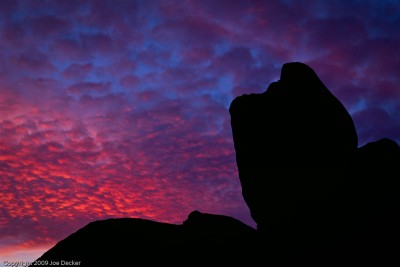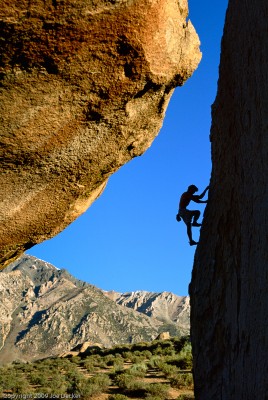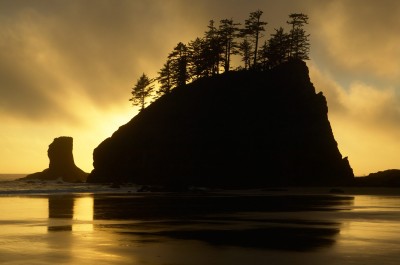If you like this article, you can now get the book! Joe has expanded the “Tuesday Composition” series into an inspiring new ebook on composition, especially for nature photography. Check it out: The Tuesday Composition.
Two weeks back we looked at how our eyes tend to behave around photographic highlights. This week we’ll spend a little time looking at the flip side of that coin, dark areas in an image.
Silhouettes provide the clearest examples. Much as our eyes seem to want to dwell in highlights, our eyes avoid dwelling in the blacks of featureless silhouettes. I believe that this is one of the reasons that in general, (and I once again must remind you that all of these compositional “rules” are really statements about what tends to happen, not what always happen, not what must happen) we don’t find featureless black areas problematic in color photographs nearly so often as we find blown, featureless highlights.
The featureless black of silhouettes seems to push the eye to the edges of the object being silhouetted, where our eyes will will tend to trace along the edges of the silhouette, emphasizing the shape of that object. Thus the studio lighting maxim, “front-lighting for color, side-lighting for texture, back-lighting for form.“
In the image from Second Beach, our eyes might first be attracted to the brightest part of the image, but much like the examples we presented last week, the eyes then wander along the edge of the silhouette. In addition to the “following the edge”, though, there seems to be a visual “push” toward reading the dark area as an object. At first glance, the small thumb near the left of the image may read incorrectly as part of the large tree-colored sea-stack, only after we look a little more closely do we notice that they are separate objects (the thumb is a little farther away).

The tendency to consolidate silhouettes into a single object can be both a blessing and a curse for photographers. In the image Alabama Hills Sunset, I selected an angle that would combine the edges of two nearby rocks to create the appearance of a single object, the shape of that illusionary object is the dominant subject of the image, if our eyes “parsed” the image as having two objects it might be less effective.
This powerful urge to consolidate shadows into a single object can just as easily be a problem, as it was when I photographed the climber Peter Croft in the Eastern Sierra, a shoot which resulted in my signature image Kali Climber. While I took something like twenty frames of this image, one of the things that makes this image effective is the separation this particular pose gave to the climber’s arms and legs. In many of the outtakes, the legs and/or arms overlapped and consolidated into a single object, only this frame really directly revealed the climber as human.

Even when dark areas of an image aren’t perfectly black, they will still often not “attract the eye” immediately when reading an image. Burning down (darkening) less interesting parts of an image can therefore be an effective strategy for emphasizing the undarkened, lighter features in an image. Similarly, darkening near the outer edges of a photograph (and leaving the center lighter) seems to pull the viewers attention into an image.
The interplay of light and dark areas in an image, as well as the lines that divide them, form one of the basic themes of photographic composition. Take a look through your own images and see if you can find places where these themes contribute to, or detract from the effectiveness of your images, as well as looking for examples of images that seem to “break the rules.” If you’ve got particularly interesting examples you’d like me to discuss, drop me an email at joedecker (at) gmail (dot) com, and I’ll consider talking through them in a future installment of the Tuesday Composition. Thanks!
